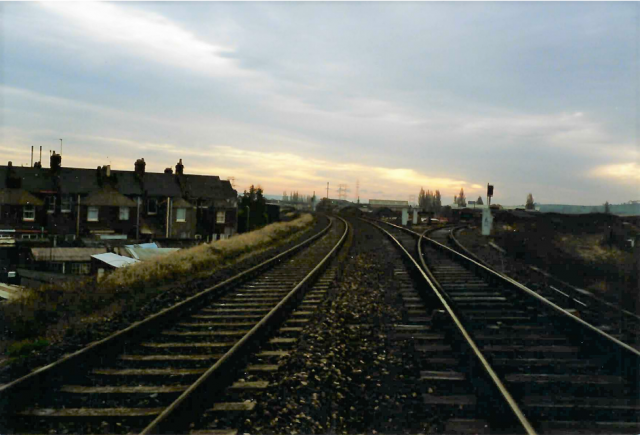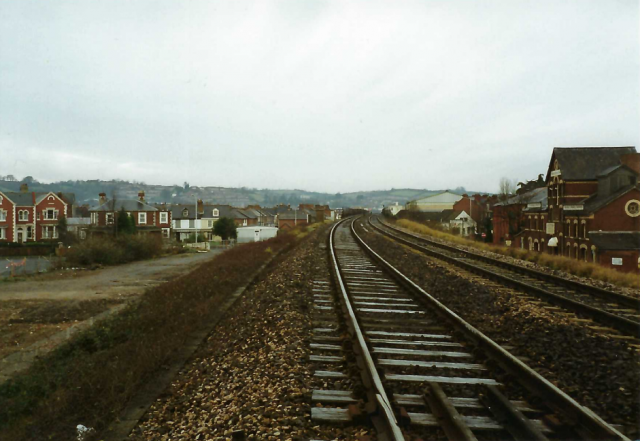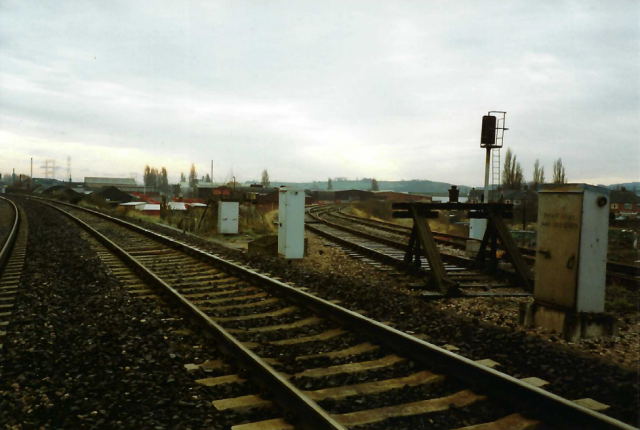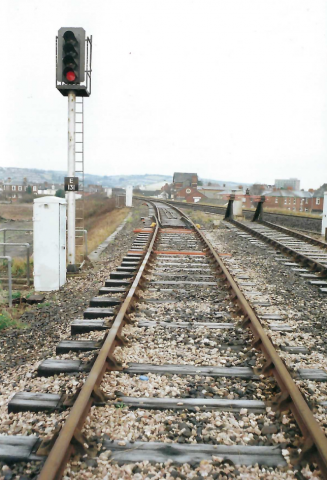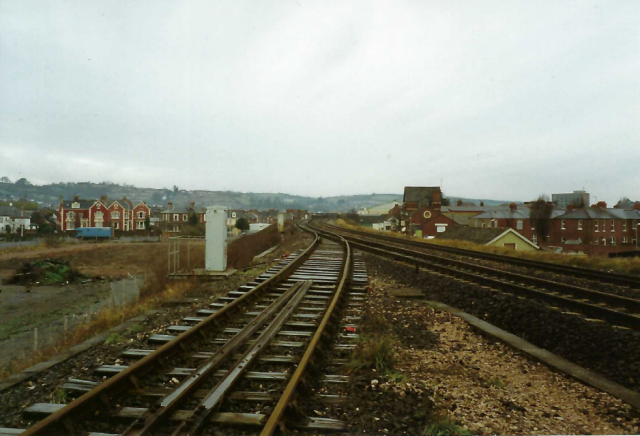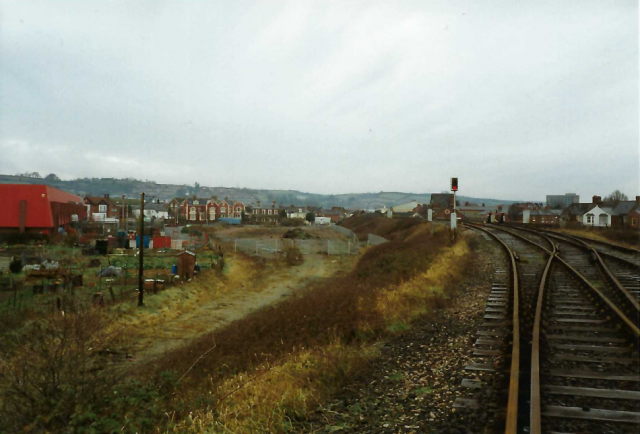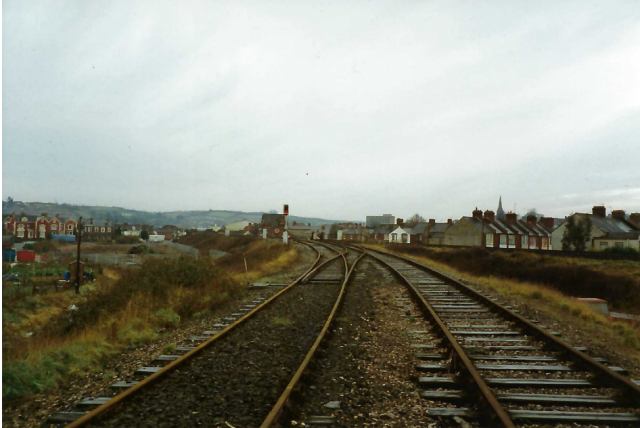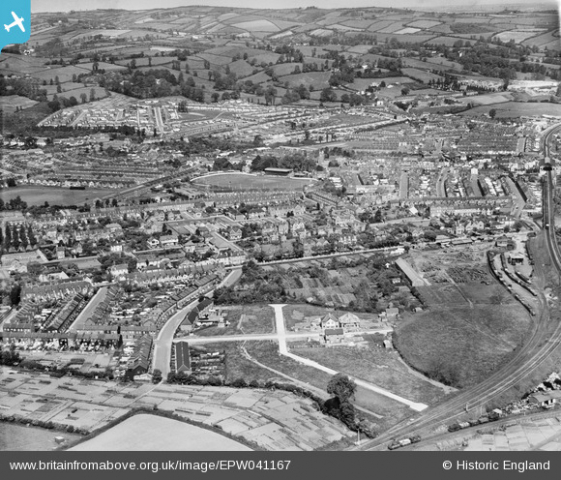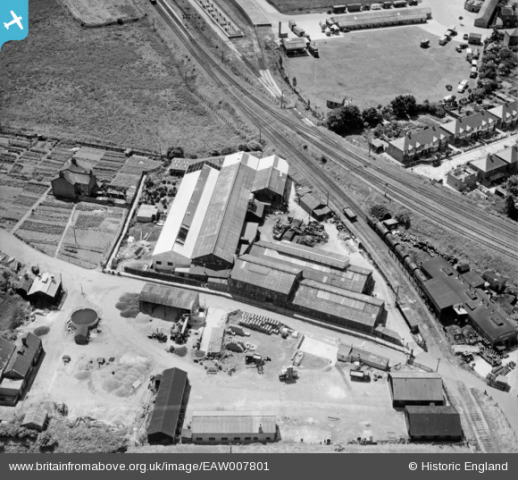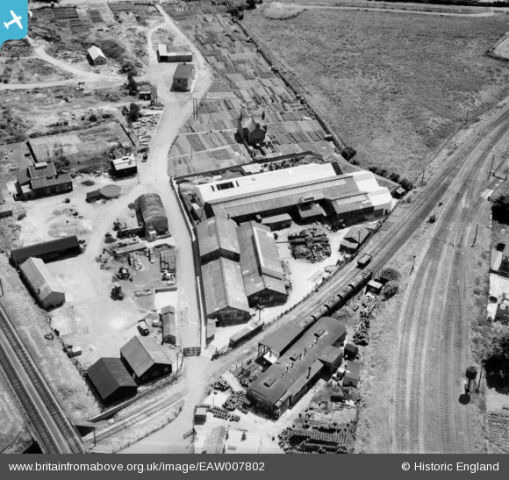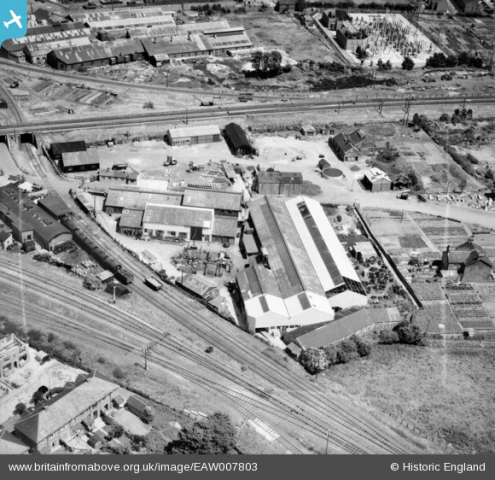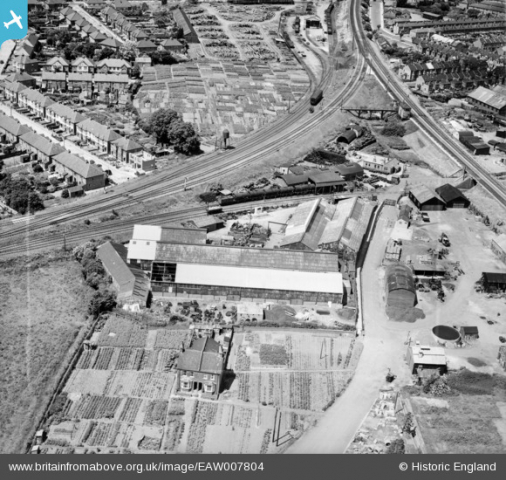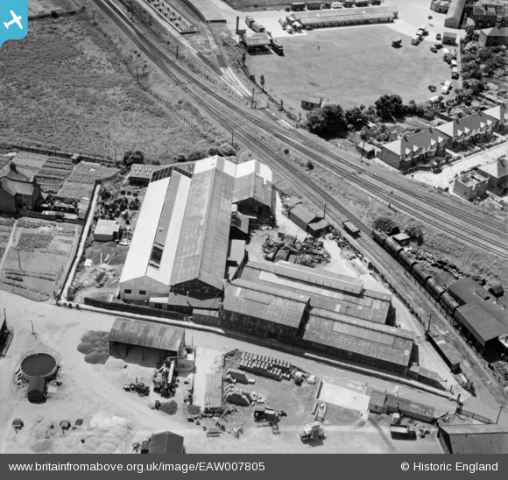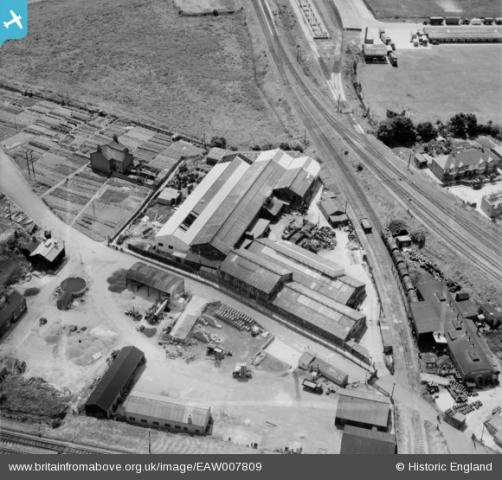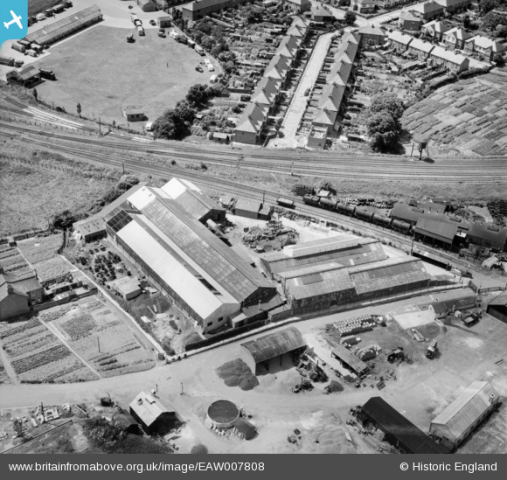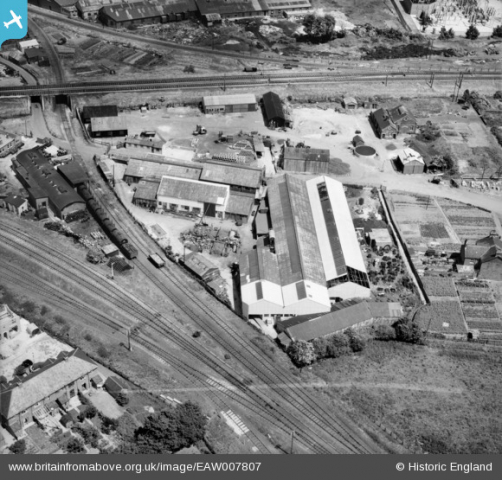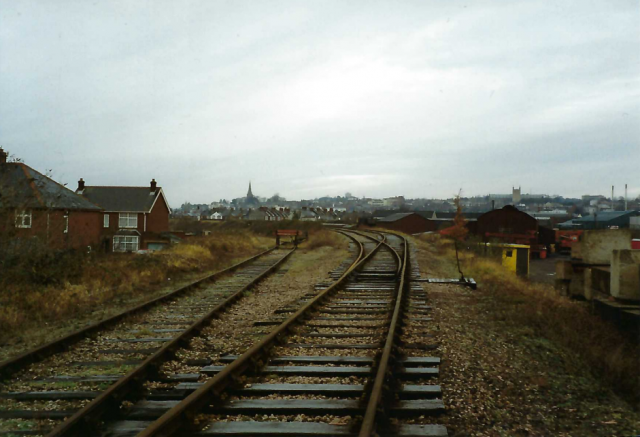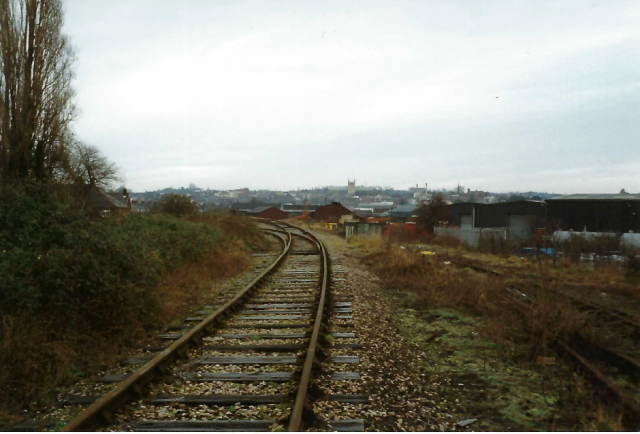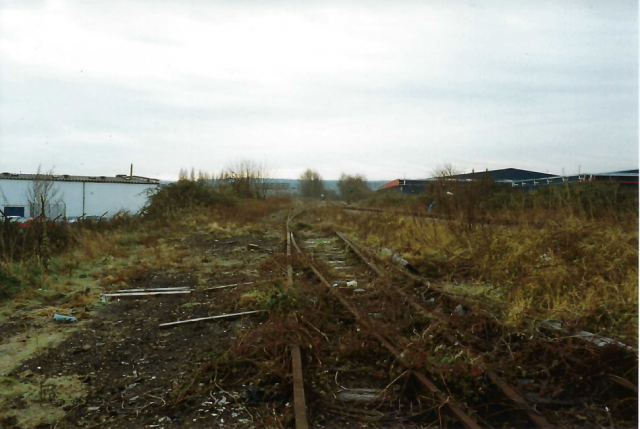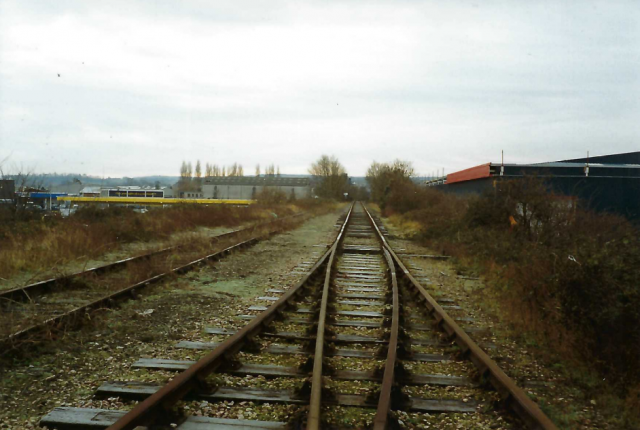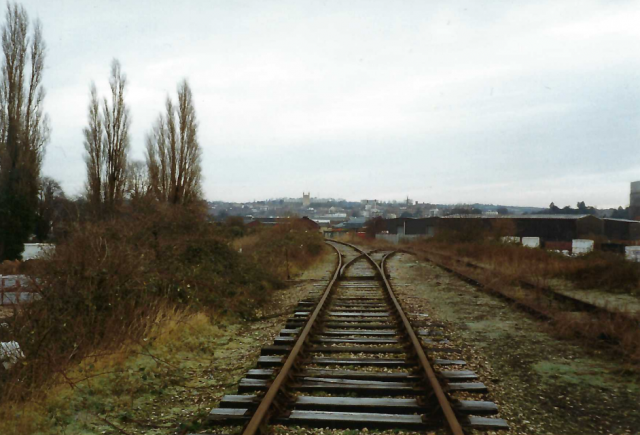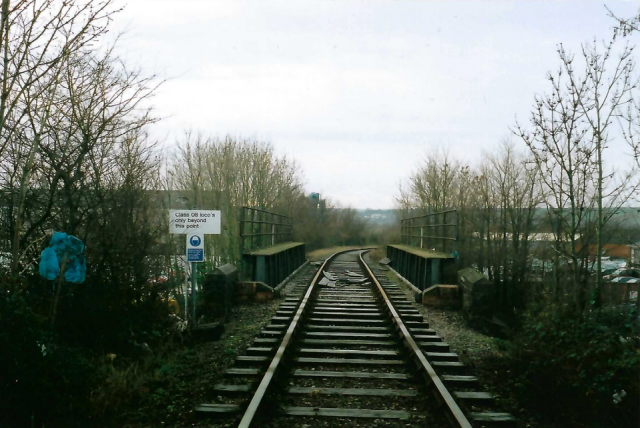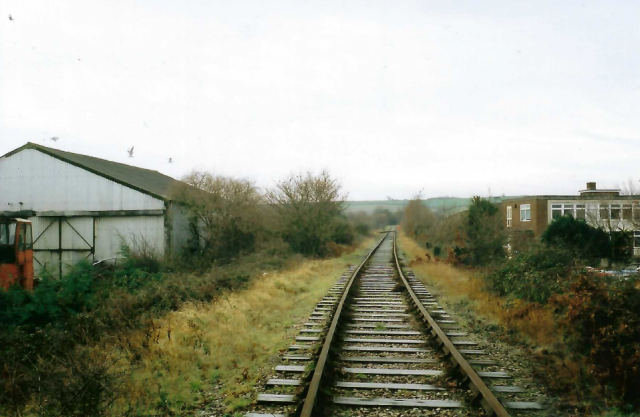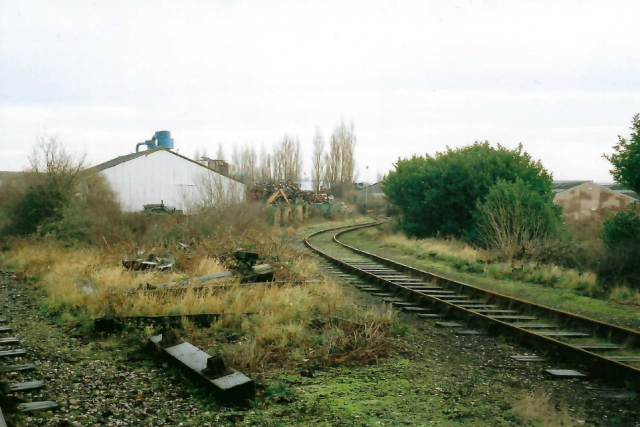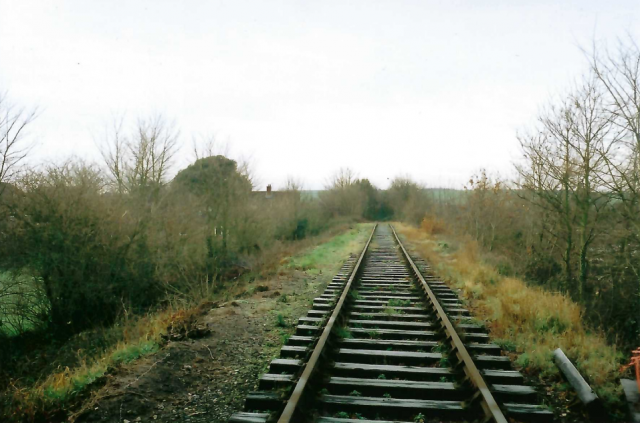On Boxing Day, thirty years ago, an inspection of the rump of the Teign Valley branch was made while there were no trains running.
The Teign Valley Branch junction is often referred to as City Basin, when it is properly Exeter Railway. What it would have been had the E.R. kept its original Exeter, Teign Valley & Chagford title is not known.
The misnomer can be understood because the box which controlled both junctions, City Basin Junction, was closer to the Teign Valley line; it had to be so that the signalman could put out and retrieve electric train staffs. In 1962, a new cedar-clad box, Exeter City Basin, was built in the fork of Exeter Railway Junction. After City Basin Branch closed, the box was left with one junction.
N.B. Trespassing on the railway is a criminal offence. No one should enter railway property without permission.
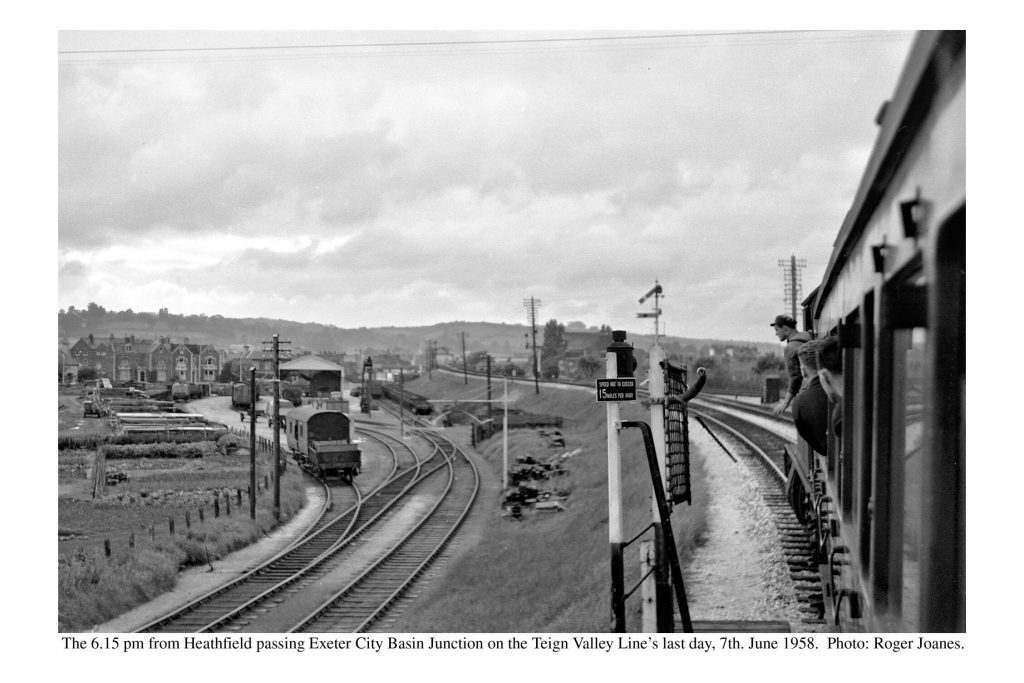
Copyright: Roger Joanes. Shared under Creative Commons. +
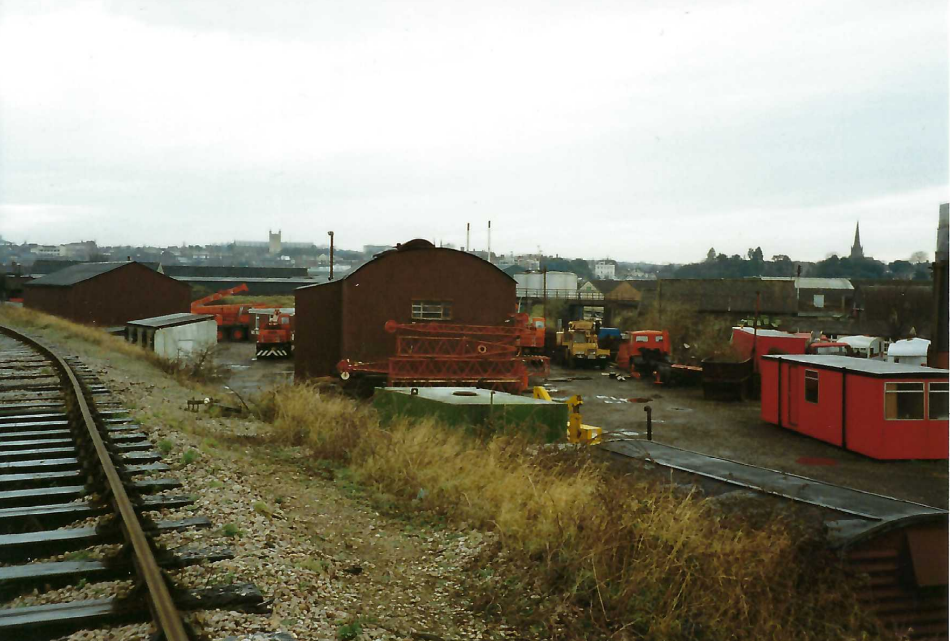
The railway’s friend, Richard Holladay, was fortunate in finding that his family firm’s works had been amply photographed from the air. Coincidentally, in capturing Garton & King’s premises, all the nearby railway features were usefully revealed as well.
All the images below were taken in 1947, except the first one which is dated 1933, before the new cattle market was built.
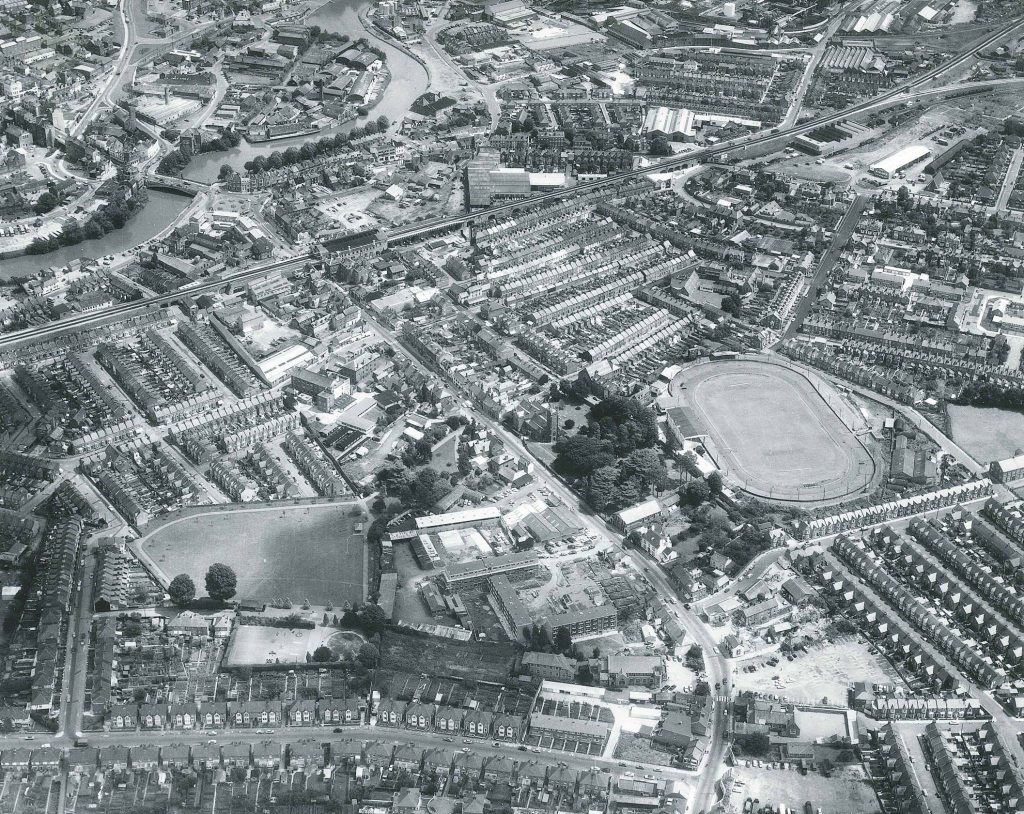
The 1905 river bridge is at top left, with Shilhay, downstream, still very much an industrial area.
St. Thomas Station is seen with its overall roof and long platforms, partly cantilevered off the viaduct.
Cowick Street passes through the centre of the view, with St. Thomas Leisure Ground, opened in 1891 for Queen Victoria’s jubilee, to the left and the county rugby ground and its speedway track to the right. A row of shops is under construction which would include the Sawyer’s Arms, opened in 1966.
The scout’s childhood home in School Road is also in the picture. +
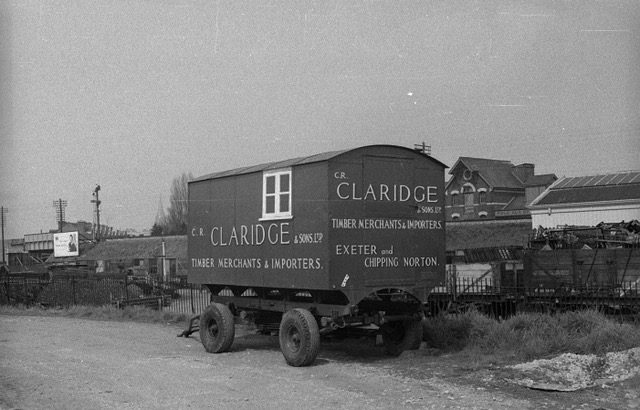
Many more photographs of the Teign Valley Branch and this area can be found in No. 48.

